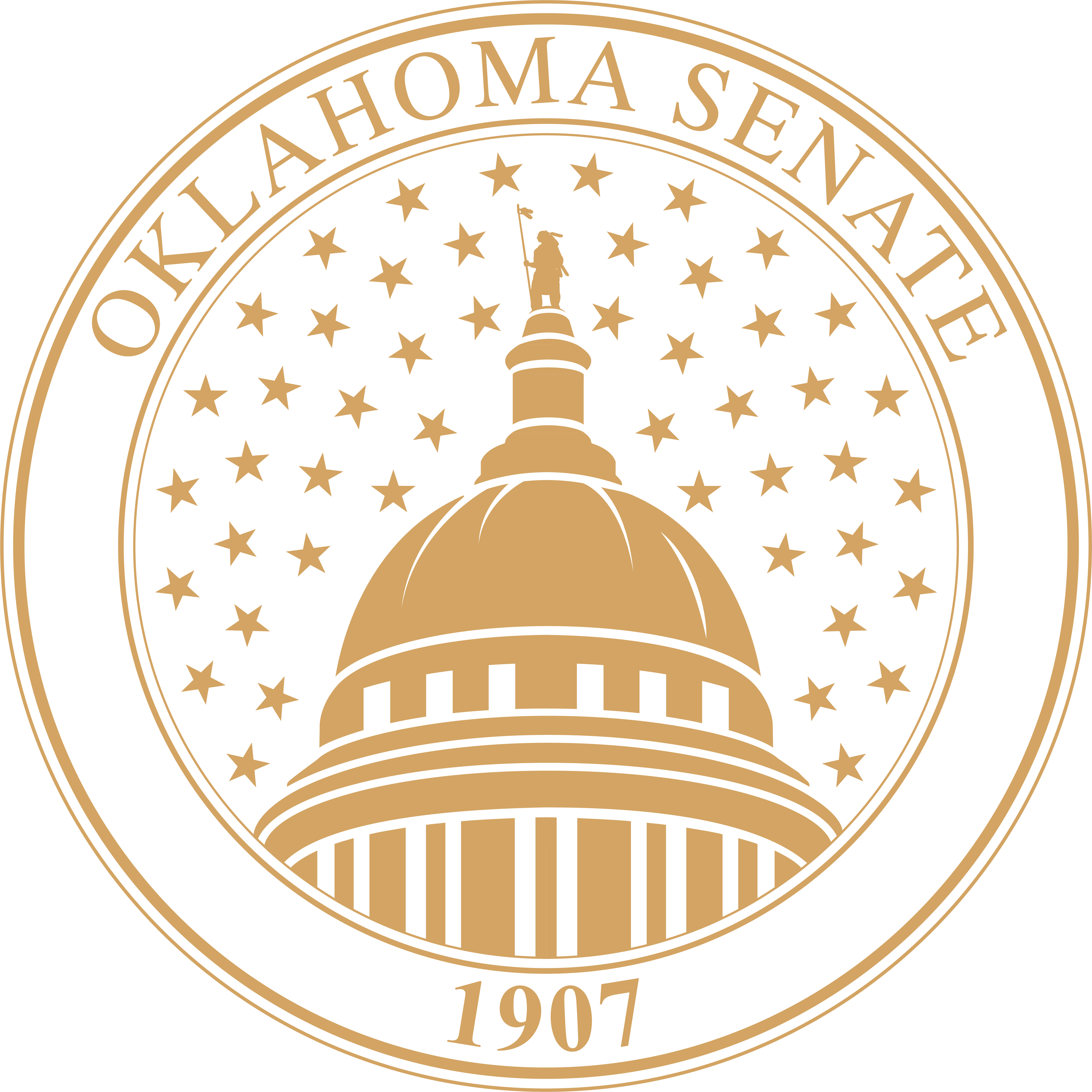Frank Frantz - Rough Rider and Territorial Governor

Artist: Timothy Tyler
Sponsor: Senator Patrick Anderson and the Citizens of Enid, Oklahoma
Dedication: April 9, 2008
Size: 30” x 40”
Type: Oil on Canvas
Location: 5th floor, North hall, Senate wing
Frank Frantz (1872-1941) was an American Rough Rider and politician who served as the seventh and final Governor of the Oklahoma Territory. Frantz ran on the Republican ticket to serve as the first Governor of Oklahoma, but was defeated by Democrat Charles Haskell.
Frantz was born in 1872 in Illinois, where he was raised and attended college. Following the opening of the Cherokee Strip on September 16, 1983, Frantz and his brothers moved to Medford in Oklahoma Territory.
In 1898, the Spanish-American War broke out and, at the age of 26, Frantz enlisted in the 1st United States Volunteer Cavalry, which the American press called the Rough Riders. Upon joining the Rough Riders, Frantz returned to Indian Territory to meet the regiment’s charismatic second-in-command, Lt. Col. Theodore Roosevelt.
Frantz was assigned to A Company and given the rank of First Lieutenant. He traveled to Cuba where the Rough Riders engaged in the Battle of Las Guasimas, the first clash between American and Spanish forces. Soon, Colonel Leonard Wood was promoted to the rank of Brigadier General, Lt. Col. Roosevelt was promoted to Colonel and was given command of the Rough Riders. On the following day, the fiercest battle of the Spanish-American War would occur, the Battle of San Juan Hill.
Frantz’s skill during the battle would forever gain him Roosevelt’s friendship and trust. While storming Spanish fortications, the commanding officer of his company was killed. Frantz immediately took over the command and led the company to a successful charge. After the battle concluded, in recognition of his service, Roosevelt promoted Frantz to the rank of Captain and commander of A Company of the Rough Riders.
After the Spanish-American War, Frantz returned to Oklahoma Territory and settled in Enid. He opened a hardware and lumber business. While in Enid, he married Matilda Evan and raised five children.
Three years later, Roosevelt was elected Vice President to serve under President William McKinley. Disaster soon struck McKinley when he was shot on September 6, 1901 and died a few days later. Roosevelt succeeded McKinley to the Presidency. Frantz’s wartime association with President Roosevelt became a life-long friendship.
On several occasions, Frantz traveled to the White House to spend time with the Commander-in-Chief. On these trips to the White House, Frantz, an athlete and boxer, engaged in several boxing matches with Roosevelt, knocking him out on three occasions.
Roosevelt named Frantz as postmaster of Enid before for the end of 1901. Frantz served in this post for two years, when Roosevelt appointed him Indian Agent for the Osage Agency at Pawhuska. Roosevelt again demonstrated his friendship with Frantz by elevating him to the governorship of Oklahoma Territory. Frantz assumed office on January 5 and was inaugurated on January 16, 1906, being the seventh and youngest governor to serve in the territory’s history.
Governor Frantz made several beneficial contributions to Oklahoma’s future. He crafted a policy requiring oil companies to lease mineral rights to the state when he learned that oil companies were drilling on land reserved for public buildings. In 1906, Congress passed the Enabling Act and Frantz’s administration began obtaining the remaining amount of land in No Man’s Land, which would become the Panhandle of modern Oklahoma.
After losing the election in 1907, Frantz moved to Denver and then to Tulsa where he became head of the Land Department of Cosden Oil Company. He worked in the oil royalty and other businesses until his death in 1941.
Images are copyright of The Oklahoma State Senate Historical Preservation Fund, Inc. and the artist. Please contact Matt Duehning at 405-524-0126 or Matt.Duehning@oksenate.gov for further copyright information.
 Oklahoma Senate
Oklahoma Senate

